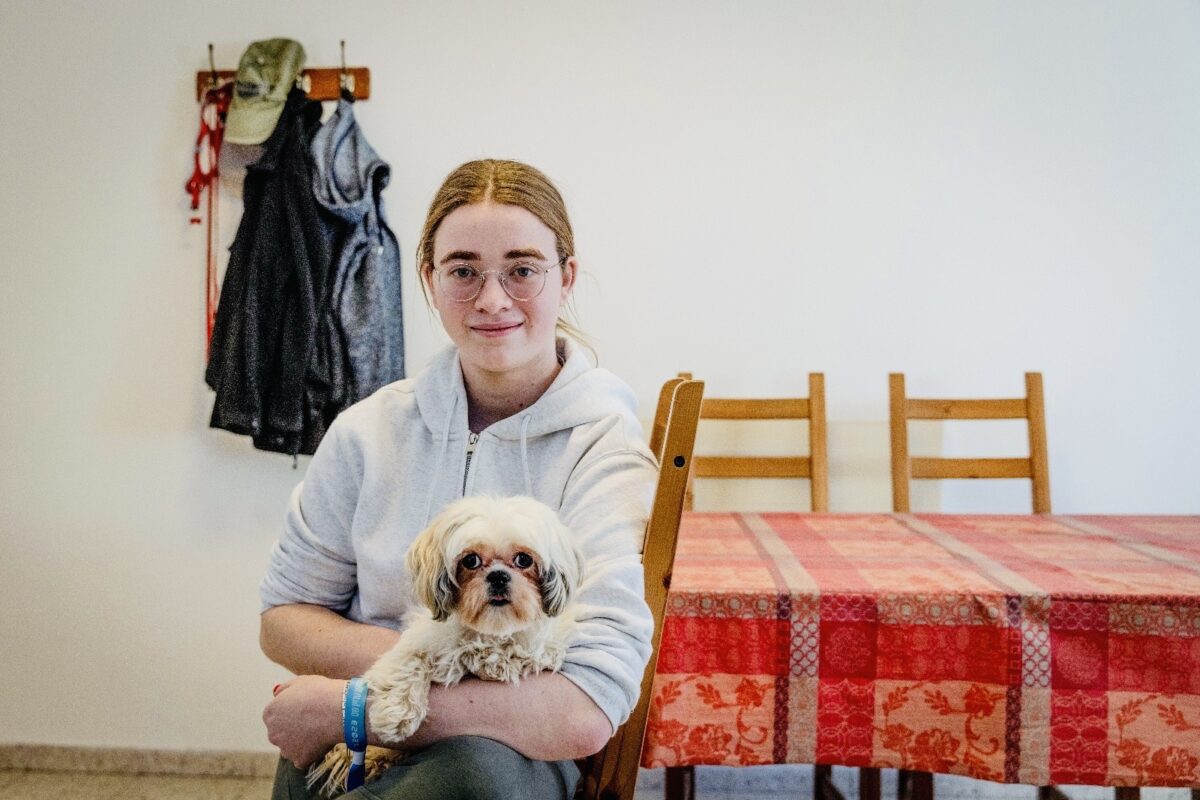Even a year later, the massacre of October 7 is still difficult to fathom. In just a matter of hours, 3,000 Hamas terrorists from the Gaza Strip penetrated the fortified border and killed about 1,200 civilians and soldiers in southern Israel in the single blackest day in Israel’s history. The Israelis who survived this atrocity recall it in vivid detail in Ben Shani’s eight-part documentary, Picture This, which is now available on the ChaiFlicks streaming platform.
The format is straightforward. Shani sits at a table across from each survivor, asks questions and waits for answers. He’s an empathetic interviewer. He feels their pain. So will viewers.
Each episode is enhanced by evocative animated sequences.
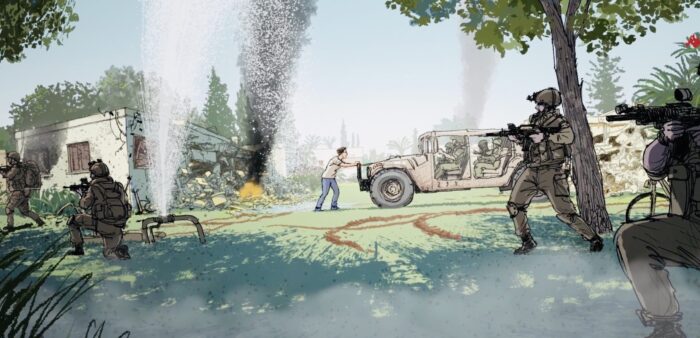
Ayelet Epstein, a resident of Kibbutz Aza, lost five members of her family, including her 21-year-old son, Netta, on that day. He jumped on a terrorist’s grenade to save his girlfriend, Irene, who he intended to marry after a long courtship.
Early that morning, Epstein heard shooting. She realized that something was terribly amass only after a friend texted that her husband had been shot.
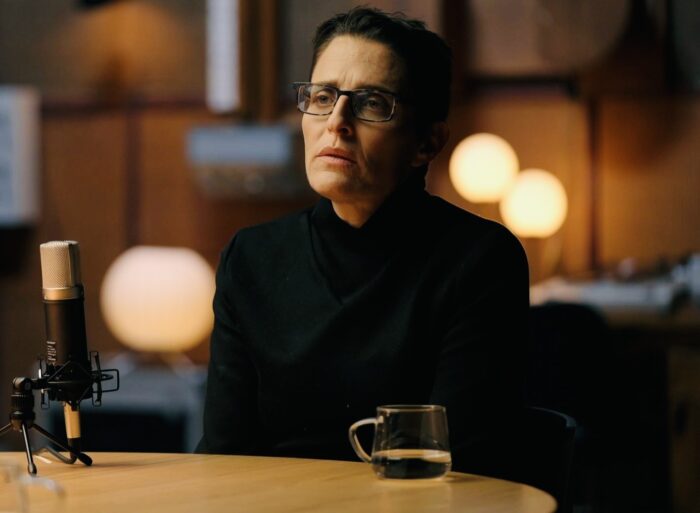
Epstein barricaded herself in a safe room, riding out the storm. She expresses disappointment that it took the army several hours to arrive. She wears Netta’s wrist watch as she speaks, and at the end of the interview, she and Shani drink beer he brewed.
Yair Avital was a member of Kibbutz Be’eri’s security team. As he admits, he felt a sense of helplessness because he and his men were so outnumbered by the intruders. Struck by a bullet and grenade fragments, he was seriously wounded, but kept on fighting, killing dozens of terrorists before he and his friends ran out of ammunition.
Be’eri was the perfect place to raise a family, says the father of three. If not for the Qassem rockets fired by Hamas periodically prior to October 7, this pastoral kibbutz would have been a paradise.
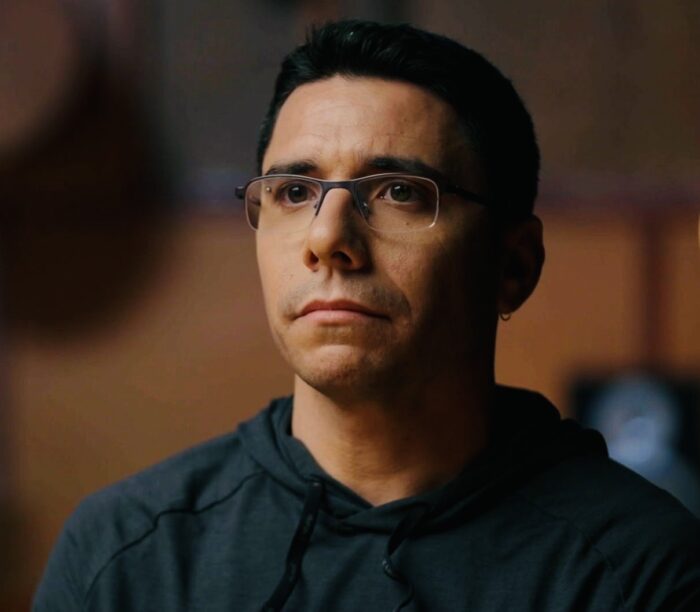
On that horrific day, residents were burned alive in their safe rooms and trees were set alight. And wrenchingly, he could hear crying and yelling. In what he attributes to a miracle, his wife and kids survived the onslaught unscathed. Despite this tragedy, he still believes in the future.
Perach Piło — a resident of Be’eri who immigrated to Israel with her parents in 1957 after the failed Hungarian revolution — rescued herself. For two days, she remained in the safe room, expecting her son to save her.
Terrorists tried to break down the door, but they could not because she had hired a locksmith a decade earlier to secure it. She took that precaution after she was awakened by a nightmare during which terrorists attacking her house.
What she saw after leaving the safe room was a landscape of devastation. She claims she emerged from this crisis stronger than before. “No one can defeat me,” she says defiantly.
Liat Atzili of Kibbutz Nir Oz was abducted by two terrorists following her husband’s murder. She was taken to a house in Gaza where a Palestinian woman caressed her hand and assured her she would be protected. She was then moved to an apartment flat in Khan Younis, where she met another Israeli woman in captivity.
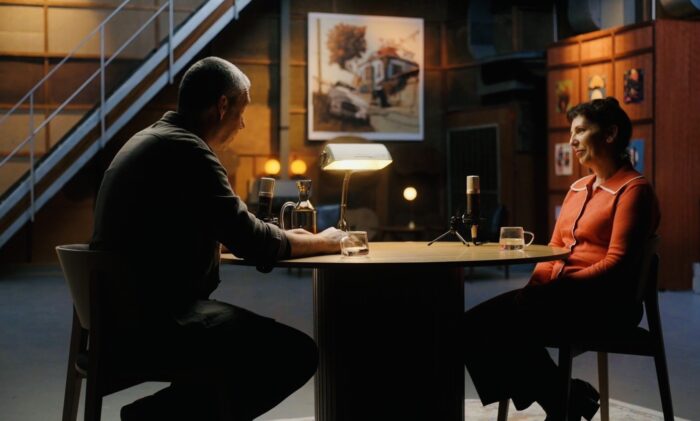
She was very scared and cried every night.
Her captors told her that they did not expect such a ferocious Israeli response, and that October 7 was a prelude to further Hamas attacks on this scale. She was released last November in Israel’s only hostage/prisoner exchange with Hamas. A day later, she received terrible news.
Mia Leimberg, a 17-year-old high school student from Jerusalem, and her adorable Maltese dog, Bella, spent 53 days in captivity in Khan Younis.
She and her mother, along with an aunt and two uncles, were kidnapped during a visit to Kibbutz Nir Yitzhak. They were led to a tunnel with many descents and then to an apartment building in Khan Younis. Surprisingly, the terrorists tolerated Bella.
Occasionally, her captor allowed her to breathe in fresh air on the roof of the building. Her uncles were later rescued by Israeli commandos in a daring raid.
Ben Landau and Bar Goldstein were strangers when they found themselves crammed inside a bus shelter along with 40 other people who had attended the Nova music festival. After it was attacked by hordes of terrorists, they escaped, finding what they assumed would be a safe haven in the shelter.

Terrorists threw grenades into the congested space, killing some of the escapees. Bar pulled Ben into the recesses of the shelter, saving his life. When they were both wounded, they cared for each other.
She is learning to live again. To Ben, Bar was a ray of light.
When Baruch Honig, a Border Police superintendent stationed in the south, heard about the massacre, he rounded up several men and headed toward the town of Sderot, a kilometer away from Gaza.
En route, they saw wrecked cars and bodies strewn on the road. On a moshav, they engaged terrorists in a battle during which a 19-year-old policewoman was killed.
He believes the terrorists might have reached Beersheba and points northward had they not been stopped in his operational area.
David Sarel, a religiously observant reserve army officer who had been studying law at a university, was instrumental in recapturing an army base from terrorists. Although he was uncertain whether he would survive, he drove headlong into the “killing field.”
He and his friends killed ten terrorists in an orchard, after which they stormed the army base. They were helped by a group of soldiers whose bus they had commandeered.
Driving an armored personnel carrier, Sarel charged into terrorists in his path, running them over.
The stories that emerge in Picture This are the stuff of high drama and a stirring commentary attesting to the resilience of the human spirit. Israel was thrown into bloody chaos and the slough of despond on October 7, but many Israelis rose to the occasion and fought back, defeating the forces of evil that had descended upon them.
